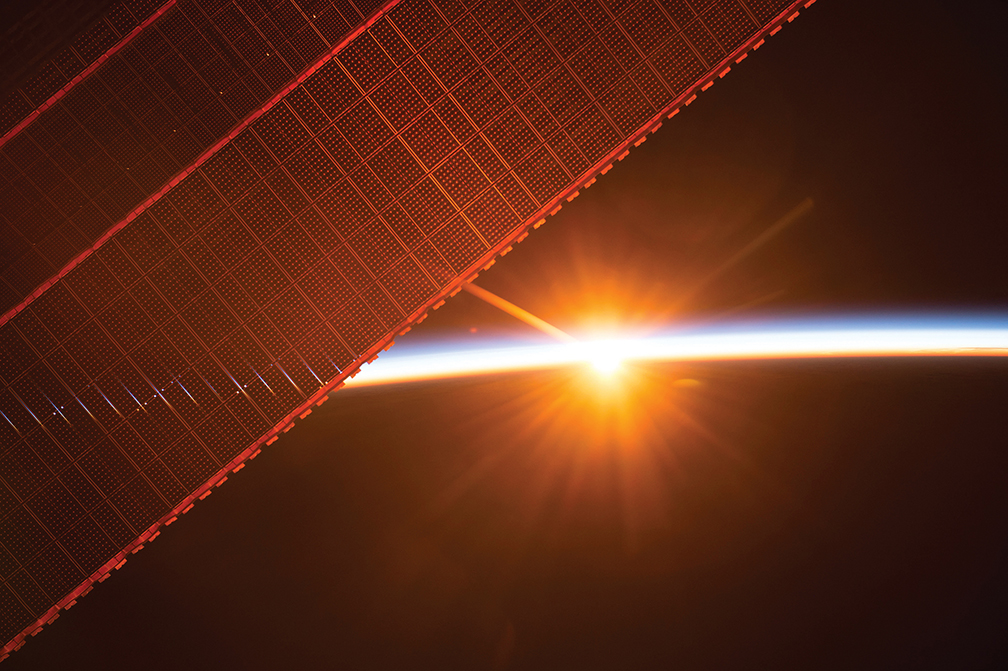A white box the size of a refrigerator, called Cosmic Ray Energetics and Mass (CREAM), headed to the International Space Station (ISS) in August, thanks to the work of UMBC astrophysicist Jason Link and colleagues. Inside, four scientific detectors will work together to detect cosmic rays coming from far flung regions of the universe. The instruments will transmit the data from the ISS to Earth, to scientists reckoning with the tantalizing question, “What is the universe made of?”
Link, an astrophysicist with UMBC’s Center for Space Science and Technology, part of the recently-renewed Center for Research and Exploration in Space Science & Technology consortium, is a co-investigator on the project and the technical lead for one of the detectors. Cosmic rays, particles from beyond the solar system, arrive with hundreds of times more energy than the Large Hadron Collider particle accelerator can produce, Link explains. Some of these particles will pass through the detector and interact inside, where they break up into a “shower of subatomic particles.” CREAM’s goal is to measure the composition and energy of individual particles, which will help scientists deduce where the rays came from and what phenomena caused them to accelerate so much.
Link has been working for more than 15 years on hardware to detect cosmic rays, including a version of CREAM that has taken seven balloon flights above Antarctica. Sending instruments to space poses new challenges, and also creates new opportunities.
“Balloons have a relatively short mission life” of a few dozen days, Link shares. “But going up on the space station, you’re now talking about years.” Also, “when particles enter Earth’s atmosphere, they start to interact,” Link says. That means data analyses must incorporate a correction factor to account for these interactions, which introduces error. That’s much less of a problem in space.
Research instruments traveling to the ISS must reckon with constraints on size and mass, and be able to withstand extreme vibration. Link’s balloon-based instruments didn’t fit these constraints, so he and colleagues from NASA Goddard Space Flight Center, Penn State, and Northern Kentucky University undertook the challenge of building a new detector, based on the balloon detectors, that could safely survive the rigors of a rocket launch and deploy on the ISS.
The new detector can also collect additional scientific measurements, and distinguish between negatively charged electrons and positively charged protons, based on the way they interact inside the detector.
“Designing a new detector from scratch on the limited budget for building balloon hardware required creativity, innovation, and a bit of luck,” notes Link. Together with a detector built by colleagues from Kyungpook National University in South Korea, the machines provide a powerful way to distinguish between electrons and protons, and to quickly verify findings, specifically because they use different techniques.
Link looks forward to diving into the data the instruments send from outer space. “If we see an excess of electrons,” he says, “that suggests that there is a local source of cosmic rays. That’s not something we expect.”
Scientists are often heavily involved in designing instruments and analyzing the resulting data, but most of the time the actual construction of space instrumentation is handed over to engineers and technicians with specialized expertise. Not this time. “Yes, I actually tightened bolts and wired sensors on the detector,” Link is proud to report, “and it’s going to fly in space.”
— Sarah Hansen M.S. ’15
Image: Sunrise from the International Space Station. Photo provided by NASA, captured by a member of the Expedition 52 crew
Tags: Fall 2017

